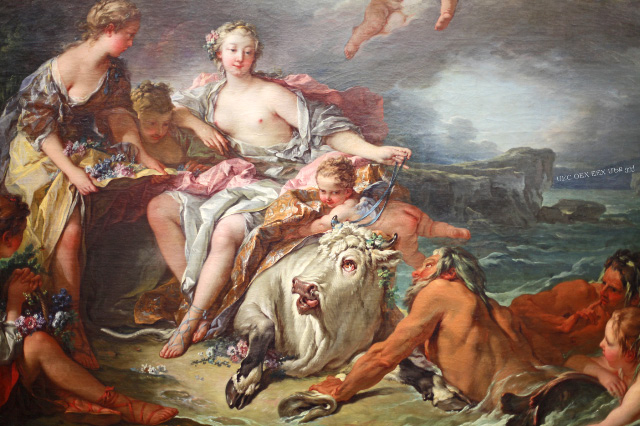 |
|
|
And gradually she lost her fear, and he
Offered his breast for her virgin caresses,
His horns for her to wind with chains of flowers,
Until the princess dared to mount his back,
Her pet bull's back, unwitting whom she rode.
Then slowly, slowly down the broad dry beach,
First in the shallow waves the great god set,
His spurious hooves, then sauntered further out,
Till in the open sea he bore his prize.
Fear filled her heart as, gazing back, she saw,
The fast receding sands. Her right hand grasped,
A horn, the other lent upon his back.
Her fluttering tunic floated in the breeze.
Jupiter's abduction of the Phoenician princess Europa,
from Ovid's Metamorphoses.
|
|
Europa - Европа - Ευρώπη - Եվրոպա - ევროპის
— In 2018 geography matters more than civilization? |
|
|
|
|
| |
|
|
And we find a very different person and woman in
Saint Lydia,
the first baptized Christian on the Continent of Europe. |
|
|
| |
|
|
|
| True, a significant portion of Europe in the most meaningful, the only meaningful, sense of European Christendom, lies within those lands bearing the name of that most celebrated merchant map maker, but maybe there are some advantages to bearing the name of a myth and not a man, at least where 25,543,658 km² are concerned (Greenland, Canada, the United States of America, Costa Rica, Uruguay, Argentina and Chile), plus possibly in the future the 576,410 km² of the Southern Brazilian states of Paraná, Santa Catarina and Rio Grande do Sul, and additionally, as a special protectorate, the 6,680,000 km² of the Amazonian Special Ecological Preserve. |
|
|
|
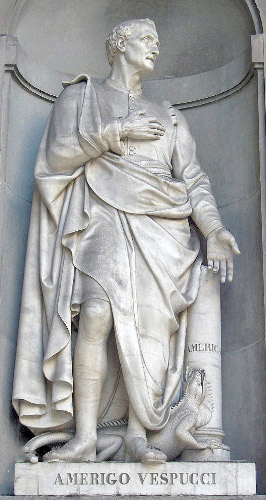
Americus Vespucius |
| |
|
|
|
Amerigo Vespucci * 9 marzo 1454 a Firenze
Américo Vespucio † 22 de febrero 1512 en Sevilla |
The chief purpose of this website is to provide and propagate information about the film United European Christendom – Heal the Schism Now. The chief purpose of this film in turn is to make some contribution to the reunification of the Orthodox-Catholic Church and to the establishment, or re-establishment, of greater civilizational unity and integrity within Christendom, beginning with European Christendom. This film intends to speak to the community of the Christian faithful. In important senses United European Christendom – Heal the Schism Now is two films, rather than two parts of one film, because the two subjects stand so very far apart. One subject, European Christendom, is hugely important. The other subject, the Church, is incomparably more important. Do not expect a lack of apparent contradictions in understanding how the community of the Christian faithful should proceed on these two matters.
The first part, let us call it the first film, attempts to deal with theological, ecclesiological and other issues involved with the 5th Century schism within the Church and more especially with the Great Schism within the Church, that which by convention is dated to 1054, which unfolded between the 9th Century and the early 13th Century and beyond. Given the issues which are involved, dealing as they do with our struggle to understand God's intentions for His Church, the disputes can not be understood as unserious. Given the understanding shared by all Christians of God's commandment toward such unity, and reflected preeminently in the Holy Scripture reproduced on this website, the disputes can not be understood as insurmountable.
Current realities, as also the writings of pre-eminent thinkers in these areas and the dialogues among and programs of senior Church hierarchs, suggest that corporate re-unification is possible among the Churches of Tradition, those that have retained the Sacraments — above all the Eucharist — and Apostolic Succession and validly ordained priesthood. These, in ascending order in terms of numbers of people in their communities of the faithful, are (1) the Oriental Orthodox Churches; (2) the Orthodox Churches which are in Communion with the Ecumenical Patriarch of Constantinople; and (3) the Catholic Church. To this commonly agreed list, the author of this film would add a fourth group. While the both the Orthodox Churches and Catholic Church officially try to deal with the Churches in this group by not dealing with them, indeed to the extent possible by ignoring their existence, this fourth group can be said to be those Orthodox Churches of the Byzantine-Slavonic liturgical tradition which are not in Communion with the Ecumenical Patriarch of Constantinople. The Ukrainian Orthodox Church, Kiev Patriarchate is only the most numerous of the large number of Churches which are caught up in this ecclesiological mess.
As important as Protestants are for Christendom, the emergence of Protestantism and the countless divisions within the western Church which began (with some small exceptions) from the 16th Century are not part of this first film. They are though very much a part of the story which is recounted in the "second" film. The second film invites the viewer to enter into a civilizational introspection as to what have been the costs of Christian disunity. It consists essentially of a series of case studies in the costs of the Schism. It also invites the viewer to engage in some informed speculation as to what Christendom, beginning with European Christendom can expect should the situation of Christian disunity continue. How do you think we have been doing? Heading in the right direction?
The community of the faithful will ultimately determine whether this Church unity happens or indeed fails to happen. The Church hierarchs have their appointed roles. They are not ready to sign a joint declaration or Apostolic Constitution or some other documents restoring Communion and unity, but even if they were to do so, absent the support of the community of the Christian faithful, such a declaration would fail, as it did in 1439 ... and the greatest church in Christendom became a Mosque.
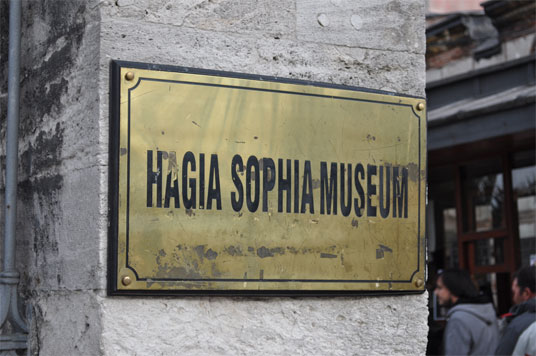 |
|
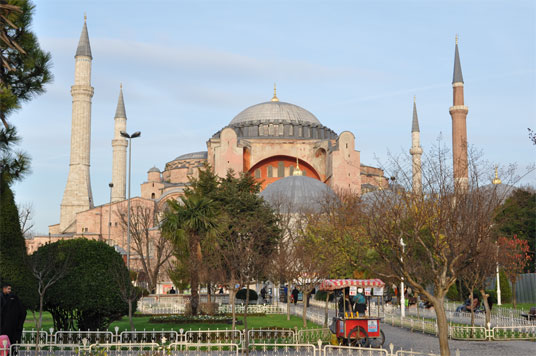 |
So you must decide. Do you want this unity?
Please consider this question again after you have seen the film.
"Division openly contradicts the will of Christ, provides a stumbling block to the world, and inflicts damage on the most holy cause of proclaiming the Good News to every creature... To believe in Christ means to desire unity; to desire unity means to desire the Church; to desire the Church means to desire the communion of grace which corresponds to the Father's plan from all eternity. Such is the meaning of Christ's prayer: 'Ut unum sint.'"
Pope John Paul II in his eponymous Encyclical from 1995
"The walls which divide us do not reach up to heaven."
Metropolitan Platon of Kiev
| Человек предполагает, Бог располагает |
|
Man proposes, God disposes |
|
| |
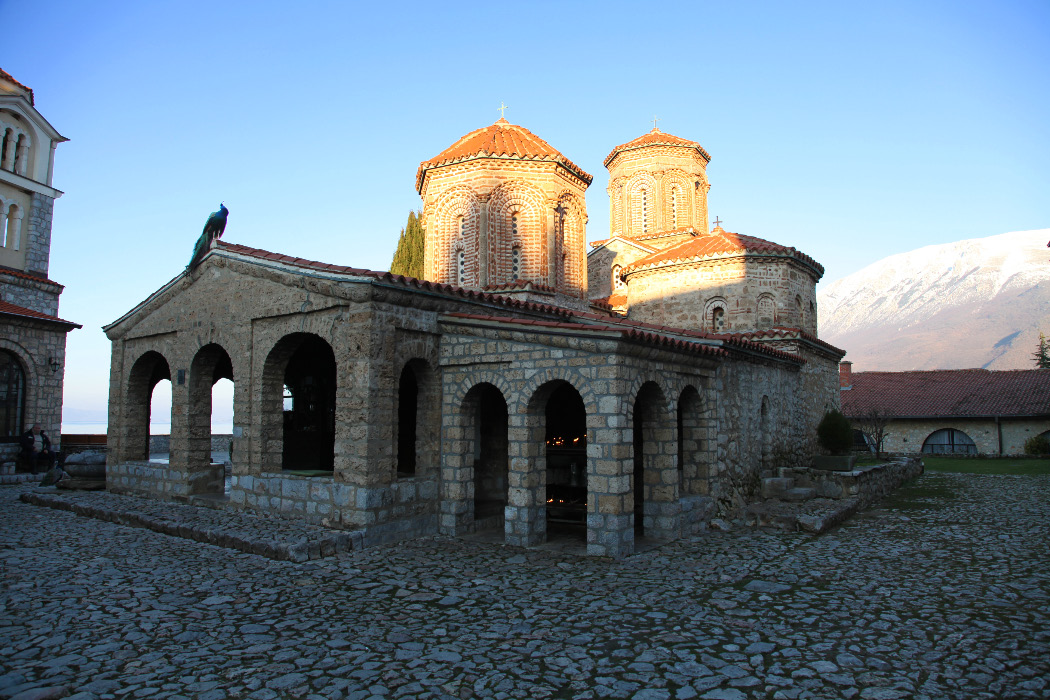 |
|
| |
Манастир „Свети Наум“ – Monastery of Saint Naum on Lake Ohrid in Macedonia, founded by the saint in 905 Anno Domini. |
|
| |
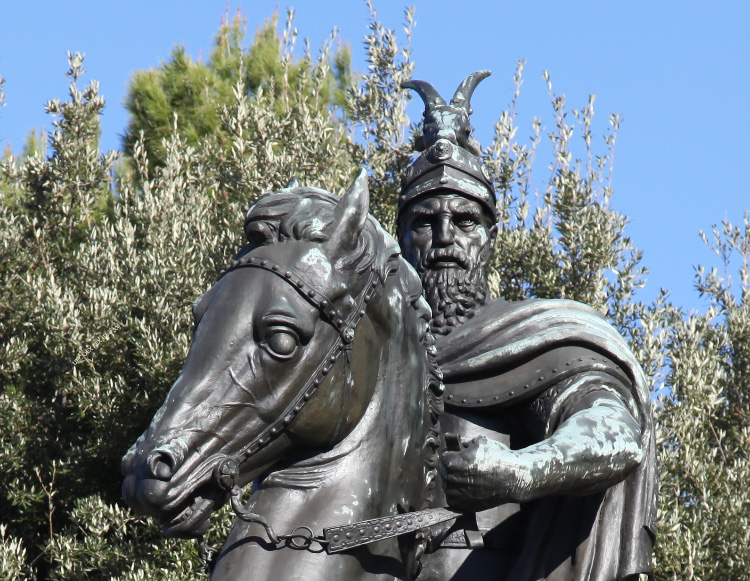 |
|
| |
Skënderbeu – Scanderbegus – Skanderbeg – Σκεντέρμπεης – Скандербег |
|
| |
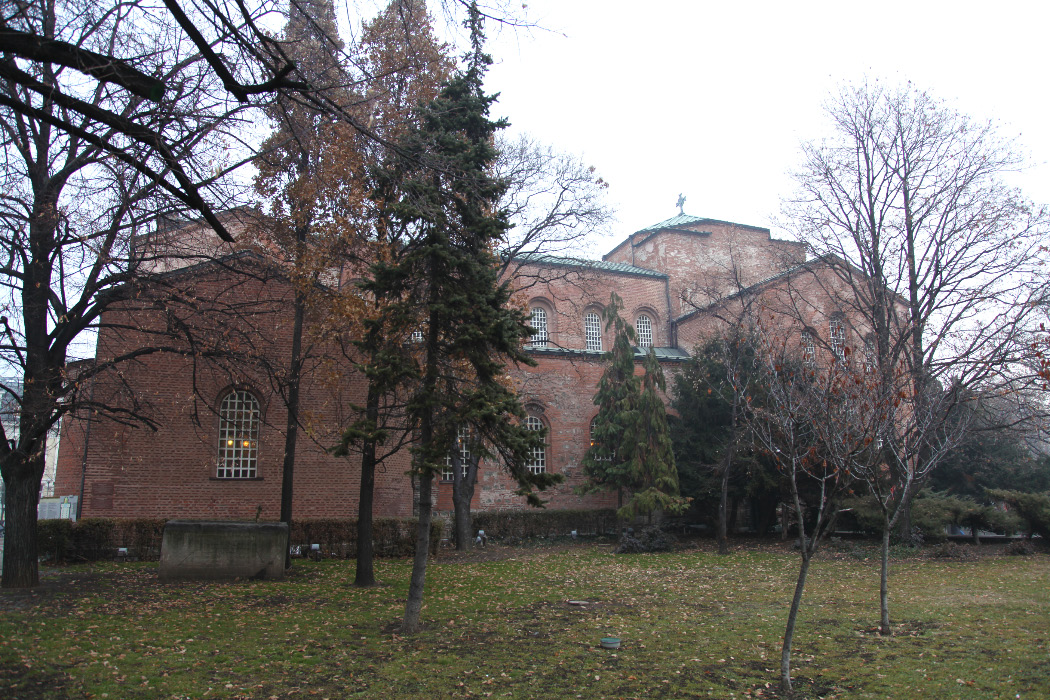 |
|
| |
Holy Wisdom in Sofia, Bulgaria – Basilica of Hagia Sophia, built from the 4th through the 6th centuries, and so one of the most important extant Churches in Christendom. |
|
| |
|
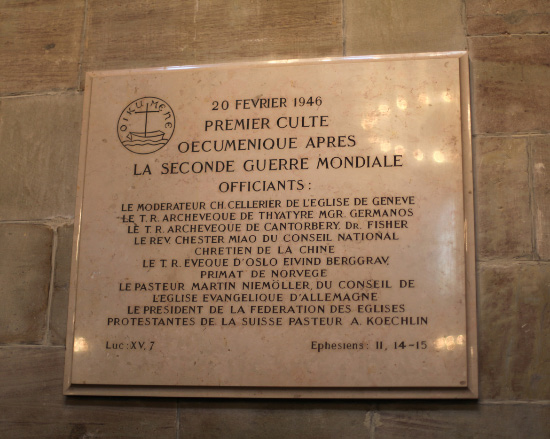 |
| |
|
From the barren wall of the utterly spiritually barren Cathedrale Saint-Pierre Geneve – Cathedral of Saint Peter in Geneva, John Calvin's adopted home. And it is really strange, on a stone plaque in a "church" to quote Ephesians 2:14-15, sunderring a sentence and the passage's meaning, rather than quoting, at least, Ephesians 2:14-16. |
|
|
|
| |
The Relationship between this present effort, United European Christendom — Heal the Schism Now — on the one side and Syncretism, Indifferentism and False Ecumenism (or False Irenicism / Eirenism) on the other side? |
|
| |
|
|
|
|
| |
Executive Summary: None whatsoever, they are antithetical and antagonistic. |
|
|
| |
|
|
|
| |
The goal of United European Christendom — Heal the Schism Now — is first and foremost the healing of the Schism within the Orthodox-Catholic Church Militant, the strengthening of orthodoxy and of the Church.
On these pages this will be dealt with intensely as also incessantly mindful that the present writer will be deciding the content of no disputed point. False Ecumenism, Syncretism, Religious Indifferentism are of and from Evil. As such, and for the avoidance of any scintilla of doubt, every single point of doctrine or morals which the Orthodox, the Oriental or Non-Chalcedonian Orthodox and the Caholic Churches all have always taught is Infallible and Inerrant. If there are any points of doctrine or morals (or anything else) among these three which might be understood as in dispute, only the faithful members of these three can participate in any form or forum in sorting such out. All others are excluded . |
|
|
| |
Any Catholic who is not about the business of evangelization might never entertain a serious hope for the Beatific Vision. |
|
| |
|
Servant of God Father John Hardon |
|
| |
Heresy is the obstinate denial or obstinate doubt after the reception of baptism of some truth which is to be believed by divine and Catholic faith; apostasy is the total repudiation of the Christian faith; schism is the refusal of submission to the Supreme Pontiff or of communion with the members of the Church subject to him. |
|
| |
|
Canon 751 of the Codex Iuris Canonici – 1983 Code of Canon Law (as later amended; one of 1752 canons), not to be confused with the 1917 Code of Canon Law. [emphasis added] |
|
| |
Roma locuta est, causa finita est – Rome has spoken, case is closed |
|
| |
|
— misquoted from Aurelius Augustinus Hipponensis – Augustine of Hippo (*13 November 354 – 28 August 430 †), Saint and Doctor of the Church — |
|
| |
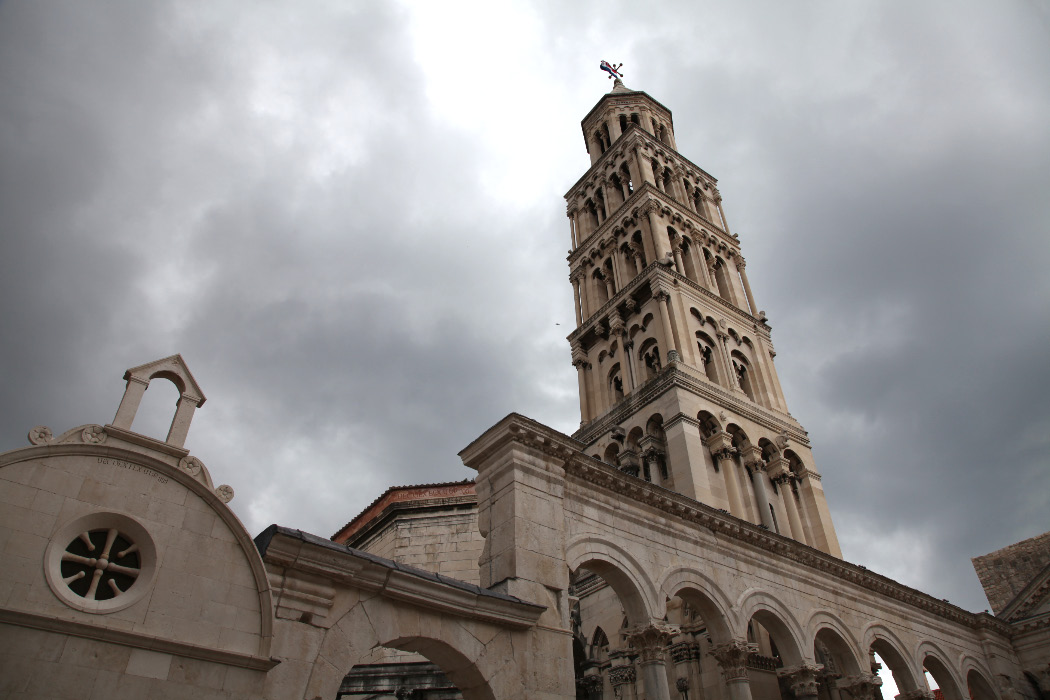 |
|
| |
Together with soldiers he labored to win for Christ, Sveti Dujam – Saint Domnius – Saint Duje, born in Antioch and the Patron Saint of Split, won a martyr's crown on 10 April Anno Domini 304 † during the persecutions of the Emperor Diocletian, whose enormous retirement palace (approximately 160 by 190 meter) occupies so much of this old town of Split, Croatia. Located within that palace complex the imperial mausoleum for Diocletian was built in the earliest 4th century, but since the early 7th century it was converted to a holy purpose and has been the Splitska Katedrala, now dedicated to the the Assumption of the Blessed Virgin Mary and to Saint Duje. |
|
| |
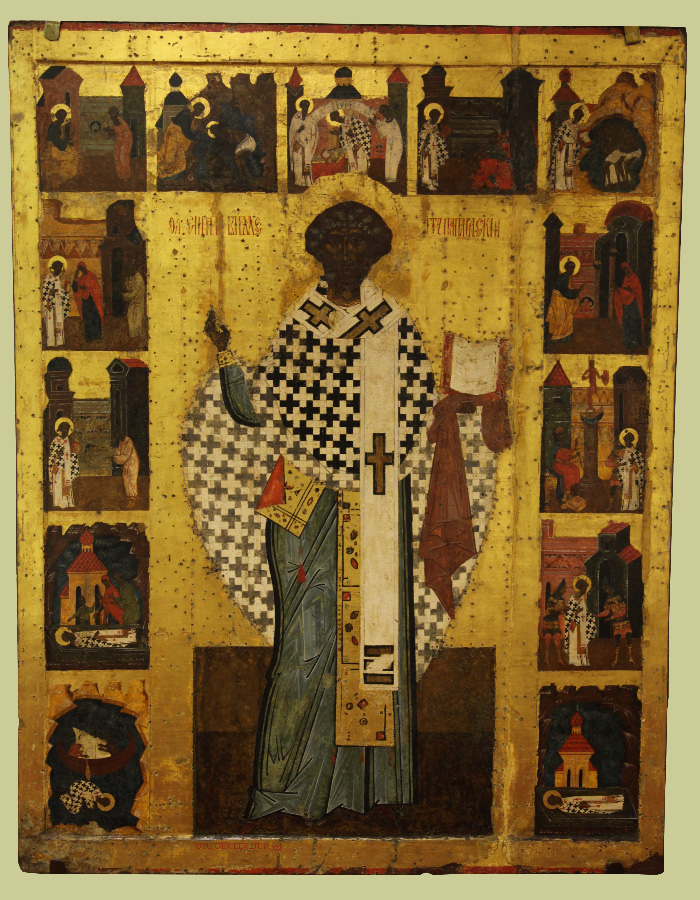 |
Русское православие честь и почитание Папу.
Russian Orthodoxy honoring and venerating a Pope.
XVI century icon from Архангельская Область – Arkhangelsk Oblast. |
| |
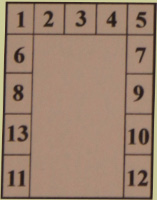
Chronological order of panels with
scenes from life of the saint. |
| |
Климент I – Άγιος Πάπας Κλήμης Α΄ – Clemens I Romanus – Pope Saint Clement I
Consecrated by Apostle Saint Peter, the Liber Pontificalis lists Saint Clement as
the fourth pope (r. 92 to 99), the third successor after Peter, after Saints Linus
and Anacletus/Cletus. Relics translated to the Basilica of Saint Clement by
Свети Константин-Кирил Философ – Свети Кирил – Saint Cyril, c. 868 Anno Domini. |
|
| |
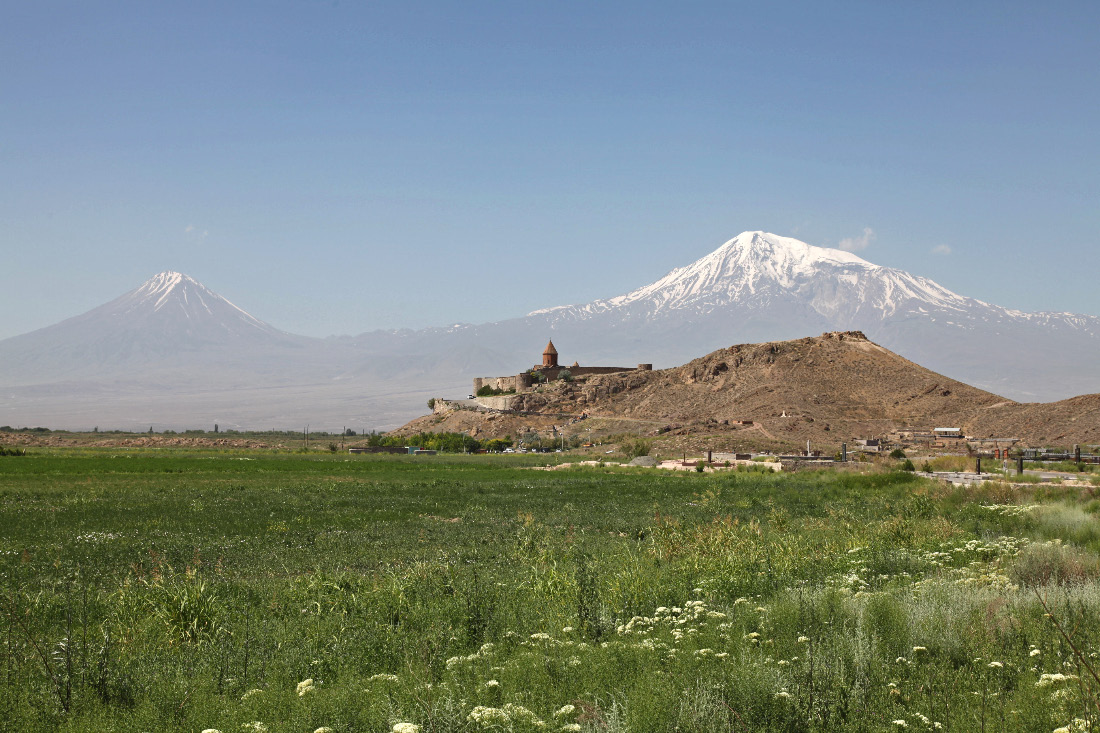 |
|
| |
In Հայաստան –Armenia, Խոր Վիրապ – the Armenian Monastery of Khor Virap against the backdrop of Արարատ – Mount Ararat.
For the 13 or 14 years ending in 301 Anno Domini, a dungeon underground pit was the home to the Patron Saint of Armenia,
Գրիգոր Լուսաւորիչ – Γρηγόριος Φωστήρ – Saint Gregory the Illuminator of Armenia (* c. 257, or as early as 240 – c. 331 †). |
|
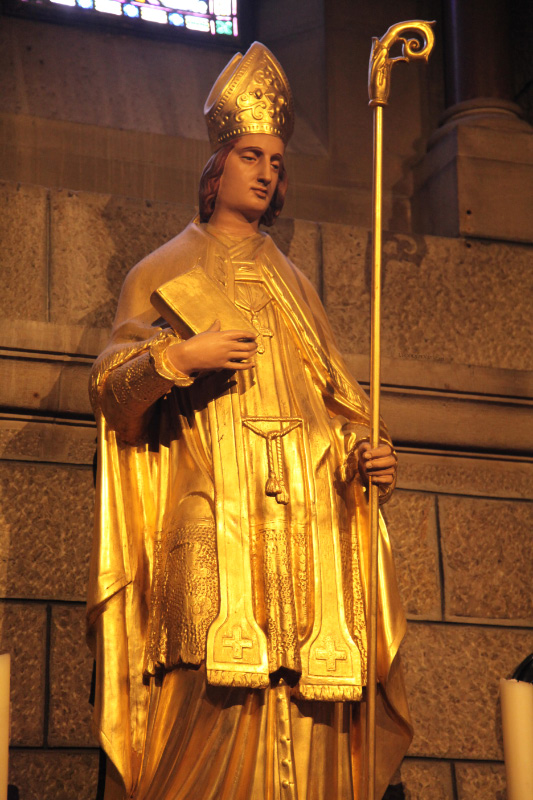 |
|
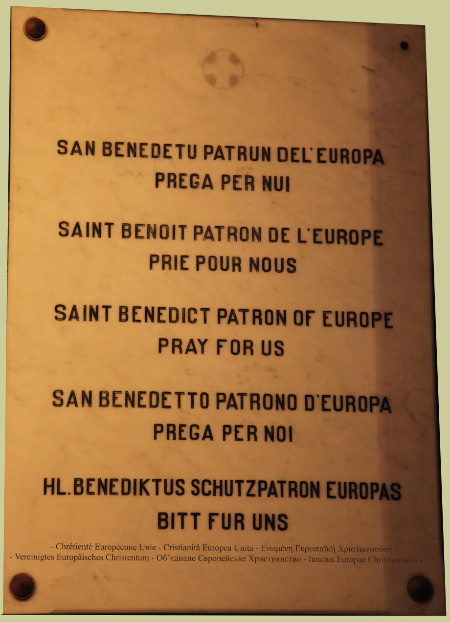 |
| Saint Benoît de Nursie – Святой Бенедикт Нурсийский – Sanctus Benedictus de Nursia – Saint Benedict of Nursia – San Benedetto da Norcia (* c. 480 Nursia, Perugia – Monte Cassino 21. March 547 †), Saint and Doctor of the Church |
|
In the Cathédrale Notre-Dame-Immaculée (consecrated in 1911), also called Saint Nicholas Cathedral after the older Church on the same site in Monaco. |
|
|
|
| |
 |
|
| |
Catholic Church of Saint David in Saint David in French-speaking, northern Maine |
|
| |
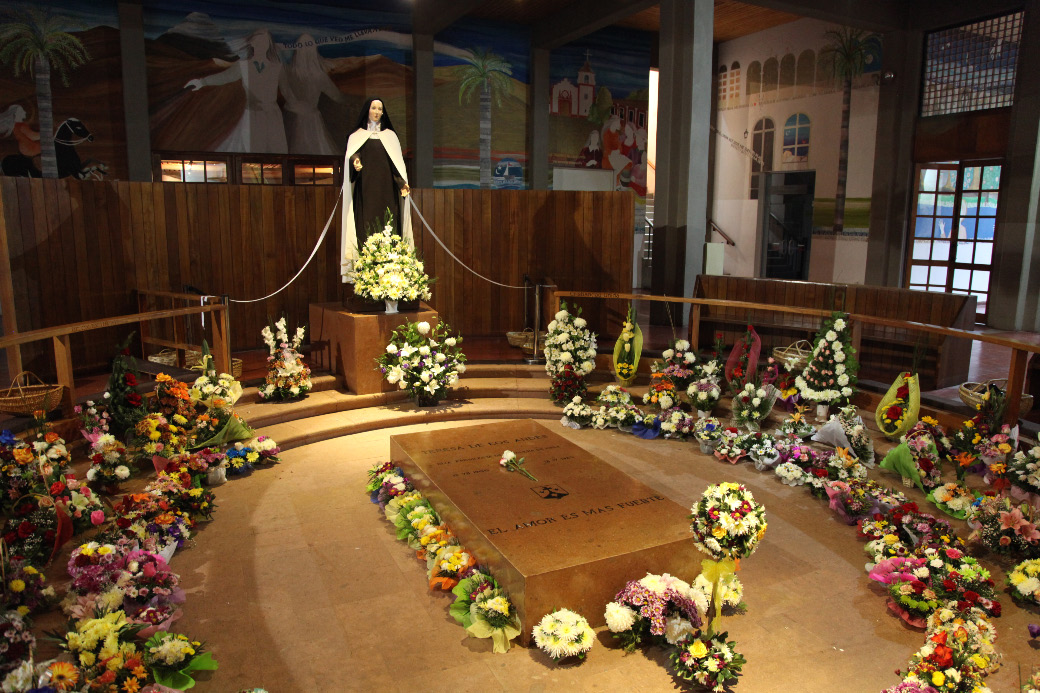 |
|
| |
El Amor es mas Fuerte – Love is Stronger |
|
| |
Santa Teresa de Jesús de Los Andes en Chile |
|
| |
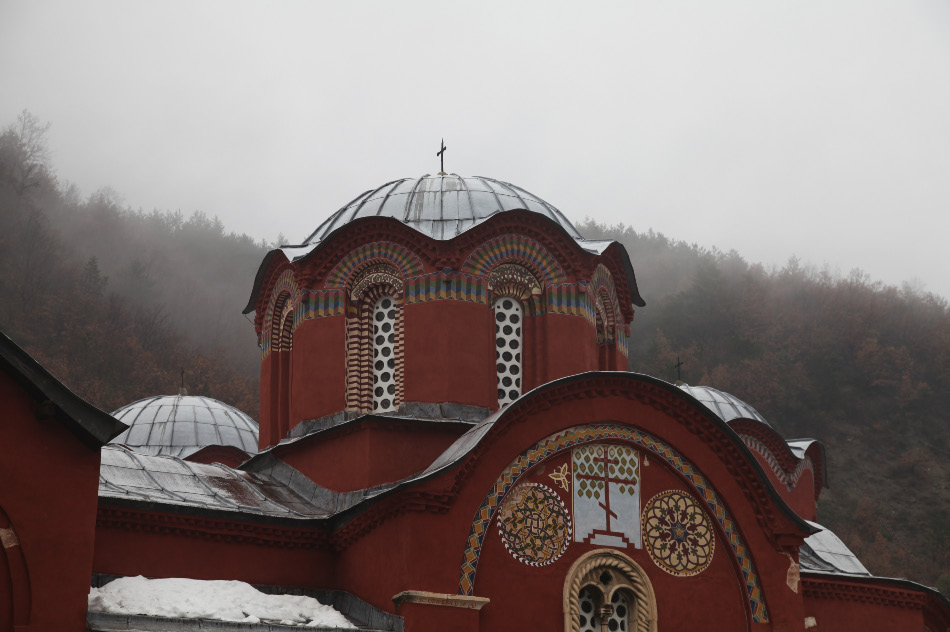 |
| |
|
Црква Богородице Одигитрије – Church of the Mother of God Hodegetria– Ὁδηγήτρια – She who shows the Way (to God), dating to c. 1330 Anno Domini, part of the Пећка патријаршија на Косову – Patriarchate of Peć Church complex in Kosovo, the spiritual center of Orthodox Christianity in, and cultural center of, Serbia. |
| |
Heliga Birgitta – Sancta Birgitta – Saint Bridget
(* 1303 in Uppland – in Rome 23 July 1373 †)
Relics Uppsala Domkyrka – Uppsala Cathedral |
|
| |
— Patron Saint of Europe —
|
|
| |
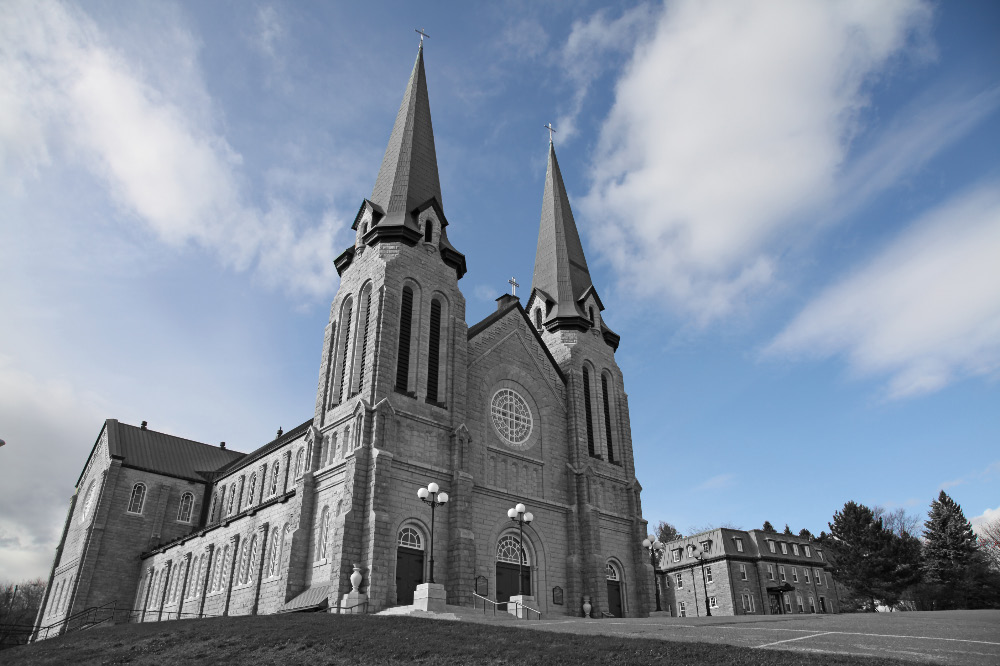 |
| |
|
True, L'Anse aux Meadows on Newfoundland Island — the probable site of the Viking colony of Vinland established in c. 1000 Anno Domini by Leifr Eiríksson – Leifur Eiríksson – Leiv Eiriksson – Leif Erikson and his coreligionists and compatriots — is 1036 km as the crow flies (or 1791 km as the roads and ferries go) northeast of Edmundston. Here the Cathedral of the Immaculate Conception in Edmundston in New Brunswick in Canada. Much was happening in the Year of Our Lord 1000 in the Nordic corner of Christendom ... and the Orthodox-Catholic Church was still united – still simply The Church – save for the Non-Chalcedonian Churches. |
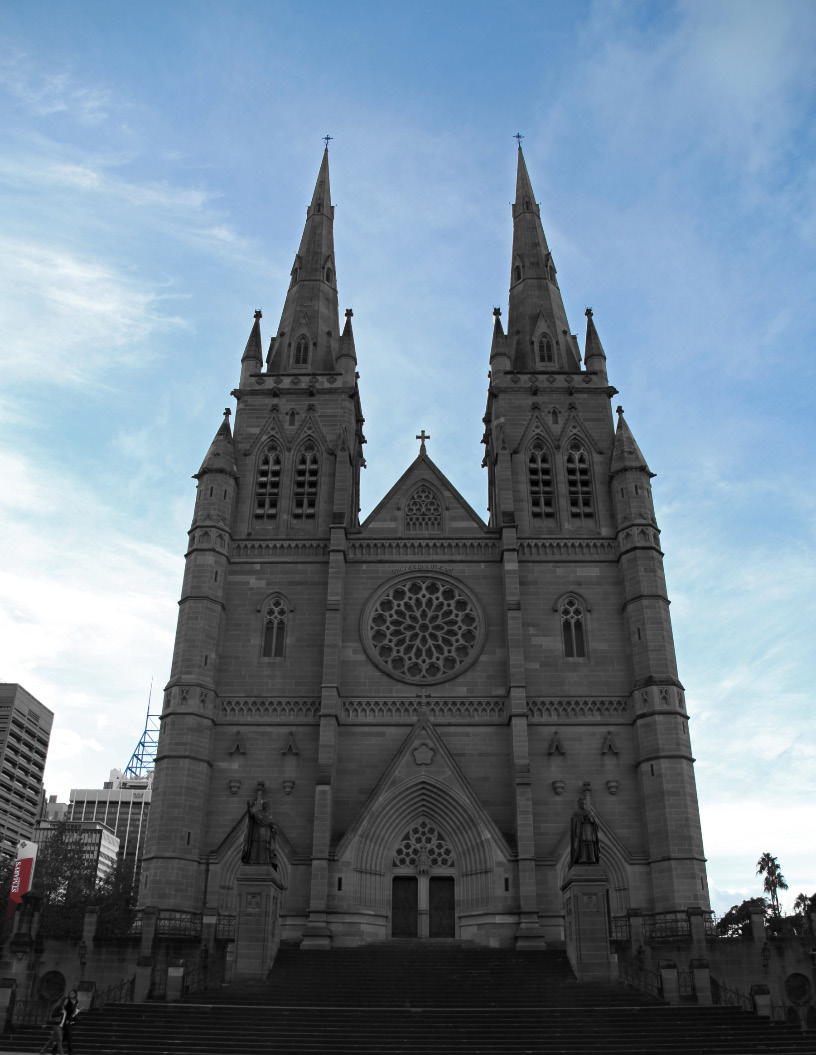 |
|
| |
Catholic Cathedral in Sydney, Australia, dedicated to "Mary, Help of Christians", Patroness of Australia. |
|
| |
|
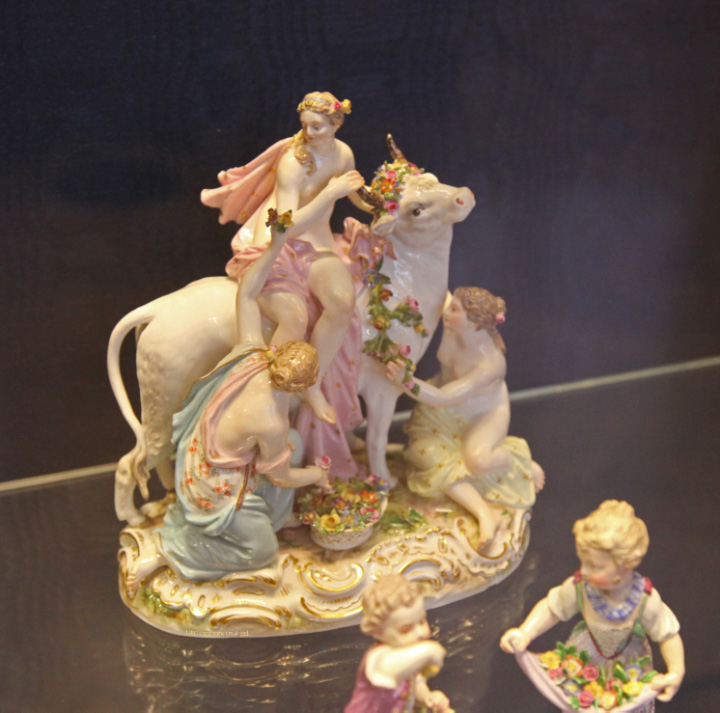 |
| |
|
Located in the Latvijas Arhitektūras muzejs in Riga in Latvia, this porcelain rendition from c. 1871 of Eiropas Nolaupīšana – Raub der Europa – the Abduction of Europa is after the model (1759) of Johann Joachim Kändler (1706 – 1775), perhaps the most important modelleur of the most important porcelain manufacturer, that of Meissen. |
| |
|
© ™ ® 2010 UEC ОЕХ ΕΕΧ ՄԵՔ ეექ All rights reserved. |
|